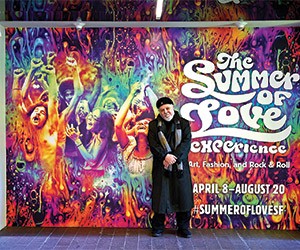From the late Sixties to the early Seventies, Bronx, N.Y.-born Robert Altman, Rolling Stone’s chief staff photographer from 1969 to 1971, captured one defining image of the era after another. His photography, noted Rolling Stone founder Jann Wenner, “was instrumental in portraying the look and feeling and vitality of the Sixties.”
Corresponding from San Francisco, Altman offered his take on a familiar refrain: “If you remember the Sixties, you weren’t there. Seems I couldn’t even remember it as it was happening.”
His camera’s memories are picture-perfect.
In his 2007 photography book The Sixties, Altman’s black-and-white images of stars such as Grace Slick, Tina Turner, Janis Joplin, Crosby Stills & Nash, Jim Morrison, Ken Kesey and Pete Townshend—plus the fans, the generation that connected with and celebrated the music and culture in ways that vitally shaped and fueled rock’s shape, energy and purpose—hypnotically capture a singular moment in American history. Altamont is the main dark presence amid the sunshine, outweighed by images shining with the era’s exuberance and optimism.
Not to be confused with the Hollywood director of films including Nashville and M*A*S*H, Altman’s professional journey began epically with tutelage from legendary lensman Ansel Adams.
“Two memorable lessons came from spending time with Ansel at his Point Sur, Calif., workshop,” Altman recounted. “The first was practical—adding a wee bit of selenium toner to my hypo-fixing solution before drying my prints brought out the billow in the clouds. The second—that I was already okay. Sounds simple, but from Ansel, I got that I already knew a fair amount about photography. More importantly, my instincts, close to his, worked, and so I emerged with great confidence and was raring to go.”
“As the Sixties (for Altman, generally between 1966 and 1974) took shape,” he continued, “I realized that these were more colorful and dynamic times than my parents’ generation had gone through. We had a wonderful, extended adolescence. It’s almost as if our parents said, ‘Go out and have a good time, but just be back by 1974.’ And, ‘getting’ that someone ought to capture this generation on film, I gave myself the assignment. Whether hired and paid or not, chronicling the life and times inspired by the Sixties through photojournalism became my calling and consumed my life.”
He added that, “I was blessed with the advantage of knowing that I was recording history. It gave me that extra push in shaping what I photographed and how I photographed it. My camera became my passport, enabling me to meet the remarkable movers and shakers of the Sixties.”
His memories are lucid enough, even the Technicolor ones.
“Dropping acid with my favorite maverick of the day, Dr. Timothy Leary, was most profound. Driving back from Berkeley with Pied Piper Tim and his wife following his California gubernatorial campaign launch, he extended his palm somewhere on the Bay Bridge. Here was one to tell my grandchildren, I thought, licking the powdered residue there. Later, sitting in a Chinese restaurant and watching his face almost liquefy, was amazing. Talk about ‘Tune in and turn on!’”
Vivid, too, was facing U.S. Army soldiers, “most our own age,” with sheathed bayonets during the October 1967 “March on the Pentagon” anti-Vietnam War protest. “We were cold and yeah, we were scared. Then, quietly at first and the rising with the sweet grace and conviction, we sang the most poignant version of America the Beautiful I’m sure I will ever hear.”
Unforgettable, too, was photographing The Rolling Stones during an session for their legendary 1969 album Let It Bleed, which features epic cuts such as the dark Chicago blues-influenced Midnight Rambler and apocalyptic Gimme Shelter.
“Their astounding new music was sensational, and I was quite aware that the album had yet to be released,” Altman recalled. “Hanging out and smoking dope with the boys, and getting some cool studio shots of Mick and Keith, was really amazing. I felt like a 13-year-old inside but kept my professional cool.”
And there was Chuck Berry, and the photo that graces our cover.
“I grew up dancing to his records, and love him along with Little Richard and Jerry Lee Lewis,” Altman said. “That duck-walk photo hails from a May 1969 concert at the Berkeley Community Theatre. He had the audience in the palm of his hand—the photo shows how pleased he was. Most fun was My Ding-a-Ling. We wholeheartedly obliged as he led us in a sing-a-long like kids around a summer camp fire.”
One year later, Altman bumped into Berry on Haight Street in San Francisco.
“He asked for a copy of the photo, which he then used on a retrospective album cover,” Altman remembered. “I was flattered, and well, Mr. Berry did have great taste!”
With an updated Sixties book featuring even more photos, plus stories and copy, slated for fall, Altman “loves going to exhibits of my works because I see myself as an outsider, as a third party looking in. I’ve become a fan of my own art, as if it wasn’t me who captured all this.”
As San Francisco celebrates the 50th anniversary of the Summer of Love this year with multiple events and exhibitions, including a promotional campaign by San Francisco Travel, one of Altman’s jubilant photos has been stylized as the promotional poster for the upcoming “The Summer of Love Experience: Art, Fashion, and Rock & Roll” exhibition at the de Young Museum.
His work, as ever, shines on.




